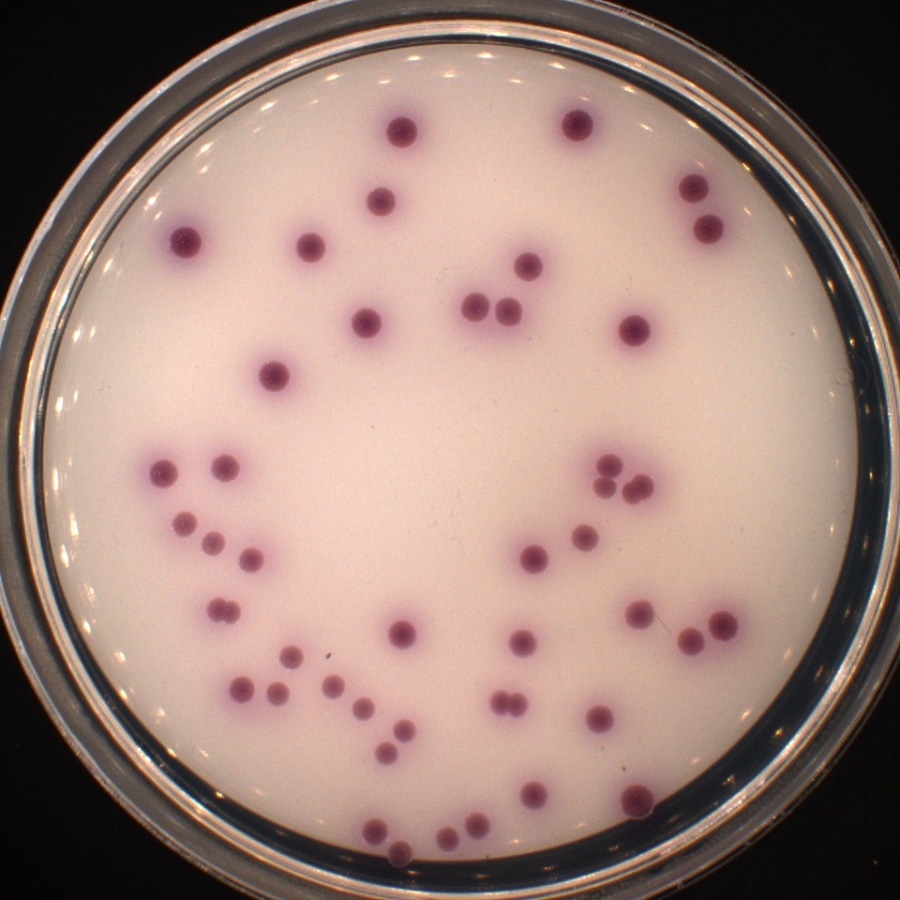Jul 25 2016
When the water temperatures increase in the North and Baltic Seas, the chance of potentially pathogenic bacteria emerging increases. Researchers at AWI have discovered evidence of living, potentially pathogenic vibrions surviving on microplastic particles for the first time. Going forward, they plan to explore in depth the role that these particles have on the buildup, and the likely distribution of the bacteria.
 Microplastics sample with Vibrio parahaemolyticus (Photo: Alfred-Wegener-Institut / Antje Wichels)
Microplastics sample with Vibrio parahaemolyticus (Photo: Alfred-Wegener-Institut / Antje Wichels)
In recent years, among the potentially pathogenic bacteria, the genus Vibrio was observed, which can cause severe inflammations or diarrhoeal diseases.
Vibrios are climate change winners, because their numbers soar at higher temperatures.
Dr. Gunnar Gerdts, Microbiologist, AWI
In moderate summers, the bacteria can be found sporadically in sea water, however during heat waves when water temperatures shoot over 22°C, there can be an explosive proliferation. This is quite common in nearshore areas of the Baltic Sea, where heatwaves in the past have frequently been linked with cases of disease or death brought on by the bacterium Vibrio vulnificus.
Along with his team, Gerdts took samples from the sea and analyzed whether the bacteria benefit from a new habitat called the plastisphere. Microalgae, bacteria, and fungi that grow in a mucous layer, live in biofilms on the surface of plastic particles. They are identified as the source for growth on hulls of ship, for example.
Each biofilm’s composition varies based on the surface condition and the living organisms in the surrounding water. Gene sequencing indicated that Vibrios could also be part of this ecosystem.
The Heligoland researchers have been successful in establishing the existence of living, potentially human-pathogenic Vibrio species in biofilms on microplastic particles.
This illustrates the potential of pathogens hitchhiking on these particles, i.e. disseminating as free loaders within an ecosystem and proliferating beyond.
Dr. Gunnar Gerdts, Microbiologist, AWI
For their research, currently published online in the “Marine Environmental Research” professional journal, the AWI team on the research vessel Heincke collected samples from 62 sampling stations across the North and Baltic Seas. Additionally, they used a Neuston catamaran to skim off microplastic particles immediately below the surface of water for laboratory-based analysis.
Overall, the researchers gathered 185 particles. On 19 of these particles, they discovered proof of Vibrios that were also typically located in water samples from the same sampling stations.
During their investigations, the Heligoland AWI team did not come across any pathogenic genotypes. Microbiologist Gunnar Gerdts is also involved in communication with the authorities regarding this topic.
At the North and Baltic Sea coasts, regional investigation offices already spot check water samples for Vibrio species. It would be a cause for concern if microplastic particles ‘charged’ with Vibrios became a regular occurrence in the future, as biofilms generally have a higher bacterial density than open water.
Dr. Gunnar Gerdts, Microbiologist, AWI
Incidentally, the test technique used in the research does not allow any conclusions as to whether Vibrios build up on these plastic particles. With the culture medium used, the team could only demonstrate whether or not Vibrios lives on the microplastic particles or in the water.
“For that reason, it is our aim for the future also to determine the number of Vibrios on the plastic particles using the quantitative polymerase chain reaction which will then also permit quantitative comparisons,” Gunnar Gerdts specifies the objectives of the next research.
Background
Besides numerous species of Vibrios, a difference is also made between varieties of genotypes of different pathogenic potential. The genotypes apparent in the research did not possess the virulence genes as spotted in pandemic genotypes, such as Vibrio cholerae El-Tor, a cholera-inducing pathogen. However, even such not highly virulent Vibrios can lead to severe diseases, especially if there is any preceding damage to the state of health (e.g. by diabetes) of the infected person.